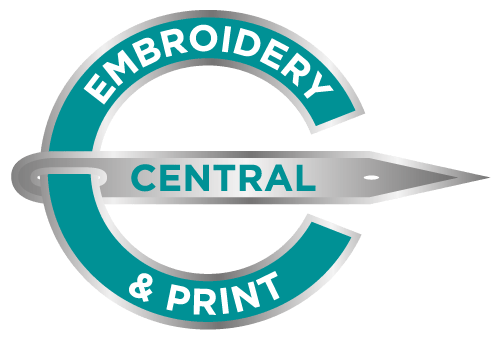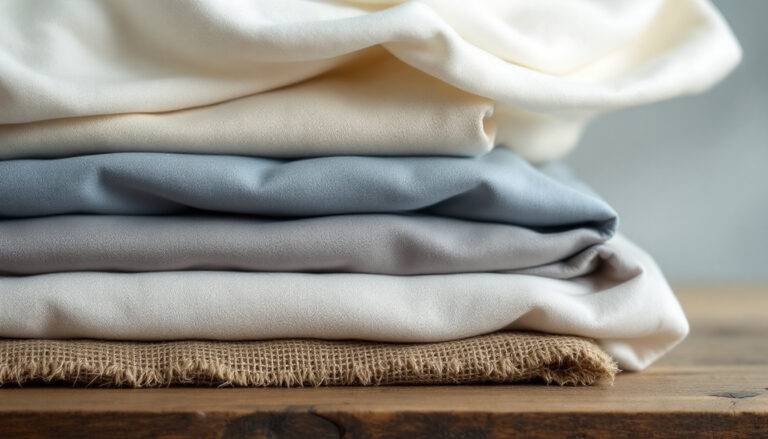Does that classic uniform policy feel more like a straitjacket than a unifying force? For many organisations, complicated uniform rules can create confusion and division rather than cohesion. Simplifying these policies can break down barriers and boost workplace unity, turning uniforms into symbols of inclusivity. This transformation doesn’t just align with your organisational goals—it champions them. By demystifying and streamlining uniform policies, companies can foster an environment where team cohesion flourishes, unifying staff under a shared identity. Read on to discover how policy simplification could revolutionise your team’s dynamics.
Simplifying Uniform Policies for Enhanced Team Cohesion
Streamlining uniform policies can significantly enhance team cohesion by minimising confusion and fostering unity. When policies are clear and straightforward, employees understand expectations better, reducing the likelihood of misinterpretation and inconsistency. This clarity promotes a sense of belonging and equality among staff, as uniforms act as a visual symbol of the organisation’s identity. By eliminating visual distinctions, employees can focus more on collective objectives rather than individual differences, supporting an egalitarian workplace environment.
Benefits of simplified uniform policies:
- Reduces Confusion: Clear guidelines ensure everyone understands the dress code, decreasing misunderstandings and non-compliance.
- Enhances Equality: Uniforms remove visual distinctions, promoting a sense of equality and inclusivity among team members.
- Boosts Morale: When employees feel part of a cohesive team, their morale and motivation are likely to increase.
- Improves Efficiency: A straightforward policy reduces time spent on choosing outfits, allowing employees to concentrate on their work tasks.
- Strengthens Brand Identity: Consistent uniforms reinforce the organisation’s brand, making it easily recognisable to clients and customers.
Simplifying uniform policies aligns with organisational goals by fostering a cohesive and motivated workforce. For instance, in the healthcare industry, streamlined uniform policies contribute to a professional image, enhancing patient trust and satisfaction. Similarly, in retail, clear guidelines ensure staff present a unified front, improving customer service and brand perception. By prioritising simplicity and clarity in uniform policies, organisations can effectively support their overarching objectives and drive success.
Benefits of Custom Workwear on Team Dynamics
Custom workwear plays a pivotal role in enhancing team dynamics by providing uniforms that are specifically tailored to fit each employee. This bespoke approach ensures that individuals experience maximum comfort and a professional appearance, which is crucial for maintaining morale and productivity. The personalised fit enables employees to perform their tasks more efficiently, free from the discomfort often associated with ill-fitting standard uniforms. By fostering an environment where staff feel valued and comfortable, custom workwear contributes significantly to a cohesive and motivated team atmosphere.
Personalisation and Branding
Custom workwear serves as an effective tool for both personalisation and brand representation. By incorporating company logos and colours, these uniforms become more than just work attire; they transform into a mobile canvas for brand promotion. This synergy between personalisation and branding not only enhances team cohesion but also strengthens the connection between employees and the organisation. When employees wear uniforms that reflect the company’s identity, they are more likely to take pride in their roles and contribute positively to the workplace culture. This alignment of individual identity with company values fosters a unified team spirit, essential for achieving collective organisational goals.
| Aspect | Benefit |
|---|---|
| Tailored Fit | Enhances comfort and productivity, reducing distractions from ill-fitting clothing. |
| Brand Integration | Strengthens brand visibility and employee alignment with company values. |
| Employee Morale | Boosts morale by making employees feel valued and part of a unified team. |
| Team Cohesion | Fosters a sense of belonging and teamwork through consistent and personalised attire. |
Creating Effective Uniform Policies: A Step-by-Step Guide
Developing effective uniform policies is vital for fostering team cohesion and boosting employee morale. Well-crafted dress code policies eliminate ambiguity, ensuring that employees understand the expectations clearly. This clarity enhances employee satisfaction and confidence, as they feel more connected and proud to belong to the organisation. By focusing on inclusivity and brand representation, uniform policies can enhance the professional image of the company, making it more appealing to both employees and customers.
Here are six essential steps to creating a successful uniform policy:
- Assess Current Needs: Begin by evaluating the current uniform situation and identifying any gaps or areas for improvement. Consider factors such as industry requirements, branding needs, and employee comfort.
- Involve Employees in Decision-Making: Engage employees in the policy development process to ensure their needs and preferences are considered. This involvement fosters a sense of ownership and increases the likelihood of acceptance and adherence.
- Define Clear Guidelines: Establish straightforward and comprehensive guidelines that detail what is expected from employees in terms of dress code. This should include specifics on acceptable attire, branding elements, and occasions for wearing uniforms.
- Communicate the Policy Effectively: Clearly communicate the new policy to all employees, using multiple channels to ensure understanding. Provide visual examples and answer any questions to eliminate confusion.
- Implement the Policy Consistently: Roll out the new policy across the organisation in a consistent manner. Ensure that all levels of management understand the policy and enforce it uniformly.
- Review Policy Effectiveness Regularly: Regularly assess the policy’s impact on employee satisfaction and organisational goals. Make adjustments as necessary to address any issues or changing needs.
Ongoing feedback and adjustments are crucial for maintaining the effectiveness of uniform policies. Encourage open communication with employees to gather insights into how the policy is perceived and its impact on their daily work. By remaining flexible and responsive to feedback, organisations can ensure that their uniform policies continue to support team cohesion and align with evolving business objectives.
Case Studies: Custom Workwear and Its Impact on Team Cohesion
Case studies provide valuable insights into how custom workwear can significantly enhance team cohesion across various industries. By examining real-world examples, organisations can understand the tangible benefits of adopting tailored uniforms, such as improved customer service and a stronger sense of team unity. These examples highlight the importance of custom workwear in fostering an inclusive and professional environment, ultimately contributing to organisational success.
Retail Sector
In the retail sector, a prominent case study involves a large retail chain that implemented custom workwear for its staff. This change aimed to align employee appearance with the brand’s vibrant identity, ensuring consistency across all locations. The introduction of custom uniforms led to increased employee satisfaction, as team members appreciated the comfortable fit and the opportunity to represent the brand visually. As a result, the retail chain experienced improved customer interactions, with staff feeling more confident and cohesive in their roles. This case underscores how custom workwear can drive team cohesion by uniting employees under a common aesthetic aligned with organisational values.
Hospitality Sector
In the hospitality sector, a case study reveals how a hotel chain benefited from switching to custom uniforms. The new attire was designed to reflect the hotel’s brand image, incorporating elements that enhanced both appearance and functionality. Staff reported a noticeable boost in confidence and job satisfaction, which translated into better guest feedback and a more welcoming atmosphere. The tailored uniforms helped employees feel like an integral part of the brand, fostering a sense of belonging and teamwork that enhanced overall service quality. This example demonstrates the positive impact custom workwear can have on team dynamics, particularly in customer-facing industries.
These case studies illustrate the powerful role that custom workwear plays in boosting team cohesion. By aligning employee attire with brand identity and ensuring a comfortable fit, organisations can foster a cohesive team environment that enhances both employee satisfaction and customer experience. The experiences from the retail and hospitality sectors provide compelling evidence of the benefits of investing in custom workwear, showcasing its potential to unify teams and drive organisational success.
Cost Considerations and Employee Satisfaction in Custom Workwear
Custom workwear often demands a higher initial investment compared to standard uniforms. However, this investment is justified by the long-term benefits it yields. Custom workwear enhances employee satisfaction, fosters brand loyalty, and offers superior durability, thereby reducing the frequency and cost of replacements. The bespoke nature of custom uniforms ensures that they are not only a tool for brand representation but also a strategic investment in workforce contentment and organisational identity.
Factors influencing the cost of custom workwear:
- Material Quality: Higher-grade materials may increase upfront costs but provide greater longevity and comfort.
- Design Complexity: Intricate designs can raise production costs but enhance the unique appeal and branding of the uniform.
- Volume of Order: Larger orders can reduce overall costs per unit, making bulk purchases more economical.
- Supplier Relationships: Established partnerships with suppliers can lead to better pricing and priority service.
- Customisation Features: Additional features like embroidery or screen printing add value but also impact the cost.
Investing in custom workwear can substantially increase employee satisfaction by providing a sense of value and belonging. The personalised fit and brand alignment of these uniforms contribute to reduced employee turnover, as staff feel more connected to the organisation. This heightened satisfaction and loyalty not only enhance team cohesion but also drive overall organisational success, making the initial cost a worthwhile expenditure for long-term benefits.
Final Words
Streamlining uniform policies and embracing custom workwear profoundly boosts team cohesion and enhances employee morale across various industries. By eliminating visual distinctions, organisations create an egalitarian environment where employees focus on shared goals.
Incorporating personalisation and branding into workwear promotes professional appearance and strengthens brand identity. Well-structured uniform policies, developed with employee involvement, contribute to higher satisfaction levels and connectedness to the company.
Through thoughtful investment in custom workwear, organisations can achieve sustained benefits in employee satisfaction and brand loyalty. The key takeaway: Uniform Policies Simplified: How Custom Workwear Boosts Team Cohesion effectively aligns with both organisational goals and employee wellbeing, fostering a thriving work environment.
FAQ
Q: Why is simplifying uniform policies important for team cohesion?
Simplifying uniform policies is essential as it reduces confusion and promotes equality among team members. Clear guidelines help employees focus on collective objectives, thereby enhancing organisational identity and team cohesion.
Q: What are the benefits of streamlined uniform policies?
The benefits of streamlined uniform policies include:
- Reduced complexity and confusion
- Enhanced sense of equality
- Improved employee focus on objectives
- Stronger organisational identity
- Increased team morale
Q: How does custom workwear impact team dynamics?
Custom workwear positively affects team dynamics by enhancing personal comfort and professional appearance. It fosters a sense of belonging and strengthens team cohesion through personalised branding.
Q: What role do personalisation and branding play in custom workwear?
Personalisation and branding in custom workwear act as tools for brand representation and team unity. They ensure employees feel part of a cohesive unit, projecting a unified organisational image.
Q: How can one create effective uniform policies?
Creating effective uniform policies involves:
- Assessing current needs and objectives
- Involving employees in the decision-making process
- Developing clear and concise guidelines
- Regularly reviewing policy effectiveness
- Seeking ongoing feedback
- Making necessary adjustments to improve satisfaction
Q: What are some real-world examples of custom workwear improving team cohesion?
In the retail sector, a big chain adopted custom workwear, resulting in improved customer service and unity. Similarly, in the hospitality industry, custom uniforms bolstered staff confidence and guest satisfaction.
Q: What are the cost considerations for custom workwear?
Cost considerations for custom workwear include:
- Material quality
- Design complexity
- Quantity ordered
- Supplier selection
- Maintenance and care requirements
Q: How does custom workwear contribute to employee satisfaction?
Custom workwear enhances employee satisfaction by providing comfort, promoting a professional image, and boosting morale and collaboration. This leads to lower turnover rates and ultimately contributes to organisational success.





